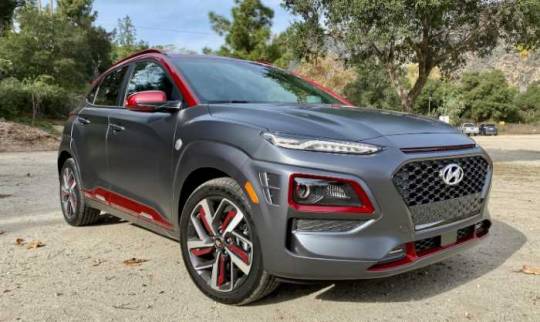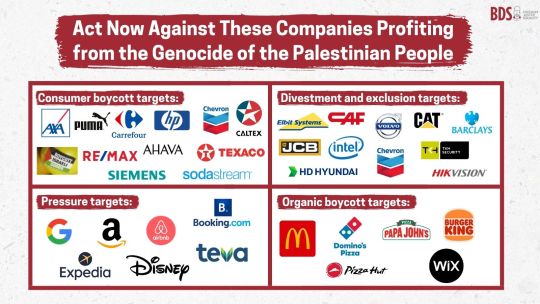#hyundai Canada
Text
2024 Hyundai Elantra

#hyundai elantra#hyundai elantra 2022#2024 hyundai Elantra#hyundai#hyundai n#hyundai n line#hyundai usa#hyundai Canada#manualwheel#cars#carlovers#newcar#new cars#luxury cars#carspotting#tumbler tags#autos#luxury
3 notes
·
View notes
Text
Hyundai and Kia have issued a recall for several vehicle models and are urging drivers to park away from buildings due to the risk that the issue could start a fire.
Hyundai says the recall involves 326,942 vehicles in Canada and 1,642,551 vehicles in the U.S.
Hyundai's recalled vehicles(opens in a new tab) include certain 2010-15 models of the Accent, Elantra, Tucson, Sante Fe and others.
According to the notice, the Anti-Lock Brake System (ABS) in the vehicles could leak brake fluid and cause an electrical short over time, which may start a fire while the car is parked or driving.
Continue Reading.
Tagging: @politicsofcanada
Date of article: September 27th, 2023.
157 notes
·
View notes
Text

Looking for a Hyundai? He's your guy!
2 notes
·
View notes
Text




















Go For a Ride Day
Go For a Ride Day, celebrated on November 22, urges you to just get up and get out! Do you ever feel like you’re tied to your laptop/phone/tablet screens? We’ve become a pretty sedentary bunch — a far cry from the people who discovered countries, oceans, and animals simply by getting off the couch and exploring. Make today a day to set your spirit free and enjoy your wanderlust on whatever mode of transportation suits you best. Bike, boat, car, skateboard, sleigh—it doesn’t matter what you choose! Pick a location you’ve always wanted to visit and make today the day you’ll go.
History of Go For A Ride Day
Birthdays are fun and Christmas means presents (if you’re lucky), but nothing quite compares with the magical day you get your driver’s license. That’s when your world truly changes forever. Why? Cars mean freedom. You can suddenly go anywhere at anytime (as long as your parents are cool with your plans). Such is the nature of transportation — something we in the 21st century take for granted. We all grew up with planes, trains and automobiles — so we’re quite used to getting where we need to go.
But it wasn’t always that way. When President Jefferson asked Lewis (and, eventually, Clark) to explore the American West in 1804, there were no nonstop flights from St. Louis to the Oregon coast. As the History Channel describes it: “The excursion lasted over two years. Along the way they confronted harsh weather, unforgiving terrain, treacherous waters, injuries, starvation, disease and both friendly and hostile Native Americans. Nevertheless, the approximately 8,000-mile journey was deemed a huge success and provided new geographic, ecological and social information about previously uncharted areas of North America.”
And today we complain about trying to squeeze our carry-ons into the overhead bin.
Americans have always loved to “go for a ride” — with whatever mode of transportation existed. Horses. Boats. Bicycles. And of course, the ubiquitous car. The nation had a long love affair with automobiles starting in the mid 20th century and lasting until recently — as a new generation of car buyers, born after the car craze, loses interest in design — focusing instead on practicality. Stellar gas mileage makes Priuses as sexy as Porsches. Well, almost.
Go For A Ride Day timeline
1950s Car culture
Cars inspired new businesses like drive-through restaurants and drive-in movie theaters, and employed one in six working Americans.
1956 Interstate highways
President Eisenhower authorizes $25 billion for the construction of 41,000 miles of the Interstate Highway System.
1964 ‘Pony car’
Ford introduces the sporty and powerful Mustang — the automaker's most successful launch since the Model A.
2019 Driverless cars get smarter
MIT engineers develop a system to help autonomous cars determine if there’s a moving object coming around the corner.
Go For A Ride Day FAQs
What does Go For A Ride Day celebrate?
Go For a Ride Day 2019 encourages us to get out in the world, as opposed to seeing it on a screen. Any mode of transportation will do on this day. What was America’s first car company?
Brothers Charles and Frank Duryea founded the Duryea Motor Wagon Company in 1893, becoming the first American automobile manufacturing company. What happened to supersonic jet travel?
The Concorde, which flew faster than the speed of sound, never turned a profit. When the plane broke the sound barrier (about 760 mph), it created shock waves that would hit the ground with a loud and sudden sonic “boom.” The FAA eventually banned all commercial aircraft from flying at supersonic speeds over land.
Go For A Ride Day Activities
Make it fun
Make it easy
Make it memorable
Dare yourself to try something new and adventurous. Why not try a mode of transportation you’ve never used before? Suggestions include jet skiing, parasailing, or going on a hot air balloon ride. In colder climates you could try a sleigh ride, or a horse drawn carriage.
Maybe you weren’t born to be wild, but don’t let that stop you from joining in the fun. Play tourist in your own city or neighborhood. Use public transit and see the sights like visitor.
Exploring is an adventure, but it can be even more fun if you have someone to share it with. Bring along an adventurous friend or family member to help make some memories. If your local friends are sticks in the mud, then bring your more adventurous friends along virtually by posting your adventure to Facebook, Instagram, or Twitter.
Why We Love Go For A Ride Day
It’s an escape from reality
It can be great exercise
It helps us be spontaneous
Every now and then we just need something to break up the status quo and make us feel alive! Go For A Ride Day exists for that very reason. It can be hard to get motivated to see new places or even try new foods, but Go For A Ride Day provides the momentum.
You can try skateboarding or using a scooter. How about getting out your helmet and going for a long bike ride? Did you know you can burn over 400 calories an hour horseback riding?
Our lives tend to run to the predictable, and for the most part, that predictability helps the world go round. But we all still have a small streak of rebellion, and that's what Go For a Ride Day helps bring out.
Source
#Dinosaur National Monument#GMC Yukon#Mono County#USA#rental car#summer 2022#Sweden#original photography#engineering#travel#road trip#vacation#Van Wert#Chevrolet Suburban#Bonneville Salt Flats#Chevrolet Tahoe#Hyundai#Spain#Canada#Go For a Ride Day#22 November#NationalGoForARideDay#Ford Expedition#2023#Teslin
0 notes
Text
📣🚨 Mega Recall Alert🚨Rising Concerns: A Closer Look at Vehicle Recalls‼️😲📣
Introduction:In recent times, the issue of vehicle recalls has been surfacing more frequently, leaving car owners and enthusiasts alike with a sense of unease. With safety being of paramount importance, it’s crucial to stay informed about the latest developments in vehicle recalls and understand their implications. In this blog post, we will delve deeper into the world of vehicle recalls,…

View On WordPress
#Canada#car manufacturers#consumer awareness#ford#GM#highway safety#Honda#Hyundai#Kia#Mexico#News#recall alert#Tesla#Toyota#U.S.#vehicle recalls
1 note
·
View note
Text
#alastair carstairs#cars#muscle cars#ca#cars meme#sports cars#camera#car accident lawyer#car seat headrest#amazing cars pictures#north carolina#caps#car show#canada#toyota#maruti#hyundai
0 notes
Text
2024 Hyundai Kona Release Date, Dimensions, Features
2024 Hyundai Kona Release Date, Dimensions, Features
2024 Hyundai Kona Release Date, Dimensions, Features – 2024 Hyundai Kona is simply about the newest face treatment appearance inside the latest industries: this subcompact SUV. Slotting beneath the Tucson, a Kona could be Hyundai’s simplest crossover SUV, at a minimum, before the 2024 Hyundai Spot appears. In this growing field, this Kona competes in opposition to competitors like Honda HR-V,…

View On WordPress
#2024 Hyundai Kona#2024 Hyundai Kona Canada#2024 Hyundai Kona Dimensions#2024 Hyundai Kona Electric#2024 Hyundai Kona EV#2024 Hyundai Kona Features#2024 Hyundai Kona Horsepower#2024 Hyundai Kona Interior#2024 Hyundai Kona Model#2024 Hyundai Kona Price#2024 Hyundai Kona Release Date#2024 Hyundai Kona Review#2024 Hyundai Kona Specs#2024 Hyundai Kona Turbo#New Hyundai Kona 2024
0 notes
Text
BOYCOTTING FOR PALESTINE
The Official BDS Boycott Targets
The Updated List is Below:
EUROVISION. IT IS IN OUR TOP PRIORITY TO BOYCOTT EUROVISION

Consumer Boycotts - a complete boycott of these brands
Axa
Puma
Carrefour
HP
Cevron
Caltex
Israeli produce
Re/max
Ahava
Texaco
Siemens
Sodastream
Organic Boycott Targets - boycotts not initiated by BDS but still complete boycott of these brands
Macdonald's
Dominos
Papa Johns
Burger King
Pizza Hut
Wix
Divestments and exclusion - pressure governments, institutions, investment funds, city councils, etc. to exclude from procurement contracts and investments and to divest from these
Elbit Systems
CAF
Volvo
CAT
Barclays
JCB
intel
HD Hyundai
TKH Security
HikVision
Pressure - boycotts when reasonable alternatives exist, as well as lobbying, peaceful disruptions, and social media pressure.
Google
Amazon
AirBnb
Booking.Com
Expedia
Disney
Teva
Here are some companies that strongly support Israel (but are not Boycott targets). There is no ethical consumption under capitalism and boycotting is a political strategy - not a moral one. If you did try to boycott every supporter of Israel you would struggle to survive because every major company supports Israel (as a result of attempting to keep the US economy afloat), that being said, the ones that are being boycotted by masses and not already on the organic boycott list are coloured red.
5 Star Chocolate
7Days
7Up
Apple
Arsenal FC
ALDO
Arket
Axe
Accenture
Ariel
Adidas
ActionIQ
Aquafina
Amika
AccuWeather
Activia
Adobe
Aesop
Azrieli Group
American Eagle
Amway Corp
Axel Springer
American Airlines
American Express
Atlassian
AdeS
Aquarius
Ayataka
Audi
Barqs
Bain & Company
Bayer
Bank Leumi
Bank Hapoalim
BCG (Boston Consulting Group)
Biotherm
Bershka
Bloomberg
BMW
Boeing
Booz Allen Hamilton
Burberry
Bath & Body Works
Bosch
Bristol Myers Squibb
Capri Holdings
Costa
Carita Paris
CareTrust REIT
Caterpillar
Coach
Cappy
Caudalie
CeraVe
Check Point Software Technologies
Cerelac
Chanel
Chapman and Cutler
Channel
Cheerios
Cheetos
Chevron
Chips Ahoy!
Christina Aguilera
Citi Bank
Carrefour
Codral
Cosco
Canada Dry
Citi
Clal Insurance Enterprises
Clean & Clear
Clearblue
Clinique
Champion
Club Social
Coca Cola
Coffee Mate
Colgate
Comcast
Compass
Caesars
Conde Nast
Cooley LLP
Costco
Côte d’Or
Crest
CV Starr
CyberArk Software
Cytokinetics
Crayola
Cra Z Art
Daimler
Dr Pepper
Del Valle
Daim
Doctor Pepper
Dasani
Doritos
Daz
Dior
Dell
Deloitte
Delta Air Lines
Deutsche Bank
Deutsche Telekom
DHL Group
David Off
Disney
DLA Piper
Domestos
Domino’s
Douglas Elliman
Downy
Duane Morris LLP
Dreft Baby Detergent & Laundry Products
Dreyer’s Grand Ice Cream
eBay
Edelman
Eli Lilly
Evian
Empyrean
Ericsson
Endeavor
EPAM Systems
Estee Lauder
Elbit Systems
Expedia
EY
Forbes
Facebook
Fairlife
Fanta
First International Bank of Israel
Fiverr
Funyuns
Fuze
Fox News
Fritos
Fox Corp
Gatorade
Gamida Cell
GE
Glamglow
General Catalyst
General Motors
Georgia
Gold Peak
Genesys
Goldman Sachs
Grandma’s Cookies
Google
Garnier
Guess
Greenberg Traurig
Guerlain
Givenchy
H&M
Hadiklaim
Huggies
Hanes
HSBC
Head & Shoulders
Hersheys
Herbert Smith Freehills
Hewlett Packard
Hasbro
Hyundai
Henkel
Harel Insurance Investment & Financial Services
Hewlett Packard Enterprise
HubSpot
Huntsman Corp
IBM
Innocent
Insight Partners
Inditex Group
IT Cosmetics
Instacart
Intel
Intermedia
Interpublic Group
Instagram
ICL Group
Intuit
Jazwares
Jefferies
John Lewis
JP Morgan Chase
Jaguar
Johnson & Johnson
JPMorgan
Kenon Holdings
Kate Spade
Kirks’
Kinley Water
KKR
KFC
KKW Cosmetics
Kurkure
Keebler
Kolynos
Kaufland
Kevita
Knorr
KPMG
Lemonade
Lidl
Loblaws
Levi Strauss
Louis Vuitton
Life Water
Levi’s
Levi’s Strauss
LinkedIn
Land Rover
L’Oréal
Lego
Levissima
Live Nation Entertainment
Lufthansa
La Roche-Posay
Lipton
Major League Baseball
Manpower Group
Marriott
Marsh McLennan
Maison Francis Kurkdjian
Mastercard
Mattel
Minute Maid
Monster
Monki
Mainz FC
Mellow Yellow
Mountain Dew
Migdal Insurance
Marks & Spencer
Mirinda
McDermott Will & Emery
Motorola
McKinsey
Merck
Michael Kors
Mizrahi Tefahot Bank
Merck KGaA
Micheal Kors
Milkybar
Maybelline
Mount Franklin
Meta
MeUndies
Mattle
Microsoft
Munchies
Miranda
Morgan Lewis
Moroccanoil
Morgan Stanley
MRC
Nasdaq
Naughty Dog
Nivea
Next
NOS
Nabisco
Nutter Butter
No Frills
National Basketball Association
National Geographic
Nintendo
New Balance
Nutella
Newtons
NVIDIA
Netflix
Nescafe
Nestle
Nesquick
Nike
Nussbeisser
Oreo
Oral B
Old spice
Oysho
Omeprazole
Oceanspray
Opodo
P&G (Procter and Gamble)
Pampers
Pull & Bear
Pepsi
Pfizer
Popeyes
Parker Pens
Philadelphia Cream Cheese
Pizza Hut
Powerade
Purina
Phoenix Holdings
Propel
Ponds
Pure Leaf Green Tea
Power Action Wipes
PwC
Prada
Perry Ellis
Prada Eyewear
Pringles
Payoneer
Procter & Gamble
Purelife
Pureology
Quaker Oats
Reddit
Royal Bank of Canada
Ruffles
Revlon
Ralph Lauren
Ritz
Rolls Royce
Royal
S.Pellegrino
Sabra Hummus
Sabre
Sony
SAP
Simply
Smart Water
Sprite
Schwabe
Shell
Soda Stream
Siemens
StreamElements
Schweppes
Sunsilk
Signal
Skittles
Smart Food
Sobe
Smarties
Sephora
Sam’s Club
Superbus
Samsung
Sodastream
Sunkist
Scotiabank
Sour Patch Kids
Starbucks
Sadaf
Stride
Subway
Tang
Tate’s Bake Shop
The Body Shop
TEVA
Tesco
Twitch
The Ordinary
Tim Hortons
Tostitos
Timberland
Topo Chico
Tapestry
Tropicana
Tommy Hilfiger
Tommy Hilfiger Toiletries
Turbos
Tom Ford
Taco Bell
Triscuit
TUC
Twix
Tottenham Hotspurs
Twisties
Tripadvisor
Uber
Uber Eats
Urban Decay
Upfield
Unilever
Vicks
Victoria’s Secret
V8
Vaseline
Vitaminwater
Volkswagen
Volvo
Walmart
Wegmans
WhatsApp
Waitrose
Woolworths
Wheat Thins
Walkers
Warner Brothers
Warner Chilcot
Warner Music
Wells Fargo
Winston & Strawn
WingStreet
Wissotzky Tea
WWE
Wheel Washing Powder
Wrigley Company
YouTube
Yvel
Yum Brands
Ziyad
Zara
Zim Shipping
Ziff Davis
#free palestine#palestine#free gaza#israel#gaza#long post#from river to sea palestine will be free#palestinian lives matter#palestinian genocide#free free palestine#current events#fuck israel#anti zionisim#isntreal#defund israel#ceasefire#boycott israel#boycott divest sanction#boycott starbucks#boycott disney#boycott mcdonalds#boycotting#boycott divestment sanctions#my post#boycotts work
187 notes
·
View notes
Text

Bro is gorgeous
From Hyundai Canada
79 notes
·
View notes
Text
New Generation of Hyundai Santa Fe




#2024 Hyundai Santa Fe#hyundai#hyundai santa fe#hyundai cars#hyundai usa#hyundai Canada#hyundai car#manualwheel#cars#carlovers#newcar#new cars#luxury cars#carspotting#tumbler tags#autos#luxury
1 note
·
View note
Text
More than 33 million people in the United States are driving vehicles that contain a potentially deadly threat: Airbag inflators that in rare cases can explode in a collision and spew shrapnel.
Few of them know it.
And because of a dispute between federal safety regulators and an airbag parts manufacturer, they aren’t likely to find out anytime soon.
The National Highway Traffic Safety Administration is demanding that the manufacturer, ARC Automotive of Knoxville, Tennessee, recall 67 million inflators that could explode with such force as to blow apart a metal canister and expel shrapnel. But ARC is refusing to do so, setting up a possible court fight with the agency.
NHTSA argues that the recall is justified because two people have been killed in the United States and Canada and at least seven others have been injured by ARC’s inflators. The explosions, which first occurred in 2009, have continued as recently as this year.
NHTSA tentatively concluded, after an investigation that has lasted for eight years, that the inflators are defective. The agency’s documents show that the inflators date from at least the 2002 model year to January 2018, when ARC installed equipment on its manufacturing lines that could detect potential safety problems.
One of those who died was Marlene Beaudoin, a 40-year-old mother of 10 from Michigan’s Upper Peninsula who was struck by metal fragments when her 2015 Chevrolet Traverse SUV was involved in a minor crash in 2021. She and four of her sons had been on their way to get ice cream. The sons were not hurt.
ARC maintains that no safety defect exists, that NHTSA’s demand is based on a hypothesis rather than technical conclusions and that the agency has no authority to order a parts manufacturer to carry out recalls, which ARC contends are the responsibility of automakers.
In the meantime, owners of vehicles made by at least a dozen automakers — Chevrolet, Buick, GMC, Ford, Toyota, Stellantis, Volkswagen, Audi, BMW, Porsche, Hyundai and Kia — are left to wonder anxiously whether their vehicles contain driver or front passenger inflators made by ARC. (Some vehicles have ARC inflators on both sides.)
Because ARC supplies inflators that are included in other manufacturers’ airbags, there’s no easy way for vehicle owners to determine whether their inflators are made by ARC. Neither NHTSA nor ARC nor the automakers have released a full list of affected models.
Michael Brooks, executive director of the nonprofit Center for Auto Safety, called on NHTSA and the automakers to release a list of affected models.
“Customers, I think, have a right to know if there’s a potential defect in their car, particularly if it’s sitting a few inches from their chest and can explode,” Brooks said.
The situation, he said, is reminiscent of the early stages of the Takata air bag inflator recalls in 2001. It took years for all the affected vehicle models to be announced.
Both ARC and Takata used ammonium nitrate to inflate air bags. Takata’s situation was more dangerous, Brooks said, because in its inflators, the chemical could deteriorate over time when exposed to high heat and humidity. Unlike Takata, ARC uses ammonium nitrate only as a secondary chemical to inflate air bags. ARC’s problem appears to derive instead from a manufacturing defect.
From 2017 to 2022, the ARC problems triggered seven small recalls from automakers. On Friday, the same day NHTSA announced its action against ARC, General Motors announced the recall of nearly 1 million more.
5 notes
·
View notes
Text
Neo-Atlantis Codex: Part III: Grid Storage
So, you want to use some unstable form of power. Wind and Solar are the biggest ones, but we could also add tidal and microhydro to the list.
Currently, 95% of grid power storage, world wide, is pumped hydro. This is in theorygood, as it does work. The problem is that regions that can use pumped hydro will typically have geography to use regular hydro, which is very, very, very efficient. But you can add pumped hydro to an existing system.
For home power storage, we use chemical cells. Typically Lithium. By current estimates, we do not have enough lithium and cobalt in the world to replace our cars, nevermind the entire grid. A lot of the mining is also done by child slaves in Africa. They also use water leeching, which works. but also uses a LOT of fresh water. It's often done in deserts, in which fresh water is the most precious thing you can have.
Lithium is also EXTREMELY flammable.
What about other chemicals? Well, we can make chemical cells out of salt water and iron. This used to require a pump, and which made it hard to miniaturize. Anything mechanical is also prone to mechanical breakdown. They have recently developed technology to elimitate the use of pumps. It's still not good for grid storage, but would be good for home power storage. It might make sense to move to a paradigm that the state provides power when it can, and homes had to store their own power. This would work, although it would require a complete change of our paradigm, and would be expensive for the poor. Which is the problem for anything to do with power, as any increase in energy cost punishes the poor, and will drop people into poverty. It will also kill off the vulnerable.
Earth Batteries. You take something with a high durability and heat capacity, like earth, stone, brick, etc. You put it inside an insulated shell. You have a heater inside. Power added from the outside becomes heat inside. The heat can be kept for a week without too much loss. You can either use this directly for heat, or use it to heat water into steam. Doing so would allow it to produce electricity. This is suitable for neighbourhoods or industrial applications. The problem with a steam engine is that you would likely need a steam engineer, which are expensive. It would also require individual neighbourhoods to be self-governing villages/shires, which would help with so many other problems. We'll talk about this later in Neo-Atlantis government/electoral system. This would reduce the work required from other parts of the power system, and in theory, in some areas, these neighbourhoods/villages/shires/wards could be entirely self-generating. If California could shed it's horrifying Fascist control, it has more than enough sunlight that individual neighbourhoods could be self-generating if it could store the power. This would also prevent blackouts. Everytime I look back, it gets further way, but in 2003, the entire Eastern side of Canada, and the New England had a power outage. Because of how connected the grids are. Independent neighbourhood production would completely eliminated this. If you had a tree down over the power lines, it would hurt at most, one neighbourhood.
Compressed air storage. The best usage of this is, funny enough, CO2. You have a giant balloon, kind of an expanding membrane. You hook it up to a pump and a turbine and heat exchanger. Power causes the pump to pump the CO2 from the balloon into the tank. You release CO2 from the tank through the turbine, and it produces power. The big drawback for this is that it requires a lot of space. Which makes it perfect for isolated solar / wind power plants. This also requires nothing in the way of novel technology, and is perfect for large grid storage.
Hydrogen. Contrary to expectations, hydrogen fuel cells never went away. Both Toyota and Hyundai have production Hydrogen fuel cell cars. Hydrogen combustion cars are also perfectly viable, if not currently commencial. Hydrogen can be produced from water through electrolysis, though not efficiently so. It can be produced mechanically from natural gas / methane; the mechanical converters use a portion of the power they produce to power themselves. Before the government were... what?.. afraid the fuel cells might actualy work? I'm old enough to remember the promise of a Hydrogen Highway from California to British Columbia to allow you to drive hydrogen fuel cell cars up and down the coast. Well, they forgot about that. Before this happened, there was a research group that made it with algae in glass tubes. All you needed to do was pump water through them. People in California could probably add it to a closed system in their car.
Synthetic Fuel. Synthetic fuel has been used, in a small scale, in racing for years. Formula 1 is also planning to replace it's entire usage with synthetic fuel in the future, apparently from atmospheric carbon dioxide and wind power. This would have the advantage of requiring no time or money to implement. It would use our existing fuel infrastructure, while also allowing the small producers to be created everywhere.
2 notes
·
View notes
Text
Cold Heading Machine Market - Forecast (2022 - 2027)
Cold Heading Machine Market size is forecast to reach US$5.49 million by 2027, after growing at a CAGR of 4.30% during 2022-2027. The cold heading machine is professional equipment supporting the automatic thread rolling machine in the whole plant of the industry. Its purpose is to use selected metal forming such as carbon steel, stainless steel, aluminum, copper, and others with suitable molds, according to the allowable compression ratio of the wire, under the action of the slider driven by the crankshaft connecting rod, automatic and fast. The cold heading machine automatically processes the wire into semi-finished products. High production efficiency, good product quality, and adjustable diameter and length. In sheet metal forming anisotropic hardening effects receive frequent attention, as spring-back. The operations required to prepare stock for cold heading are heat treating, drawing to size, machining, descaling, cutting to length, and lubricating. Cold heading machines are employed to manufacture headed parts, which are widely utilized to fabricate terminals of automobile control units, pressure sensors, engine controls units, and other mechanical machinery. The cold heading machine is also used to manufacture bolts, screws, rivets, taper roller heading, and others. Moreover, the expansion of automotive and constructional industries is estimated to boost the cold heading machine market.
COVID-19 Impact
The outbreak of COVID-19 companies operating in the market has experienced irregularity in demand. The companies have witnessed a moderate influx of demand for applications such as repairing and operations and general industrial services. Automotive manufacturing facilities had also faced a shutdown during COVID-19 with the consumers focusing on essential products, and services, the demand for automobiles declined. The effect of the pandemic on the aerospace industry was catastrophic. The dramatic drop in air transport due to the pandemic and containment measures threatened air transport feasibility. However, with the commencement of vaccinations and adoption of the new normal, the automotive, construction, and other key end-user sectors have started getting back on their feet since the last quarter of 2020.
Request Sample
Report Coverage
The “Cold Heading Machine Market Report – Forecast (2022-2027)”, by IndustryARC, covers an in-depth analysis of the following segments of the Cold Heading Machine Industry.
By Type: Single-Die, Two-Die Three-Header, Multiple Header, and Others
By Tooling Type: Punches and Dies
By Distribution Channel: Direct and Indirect
By Techniques: Upsets and Extrusions (Forward Extrusions and Backward Extrusions)
By Operation: Sizing, Piercing, Trimming, Thread rolling, Blank rolling, Pointing, and Others
By End-Use Industry: Aerospace & Defense, Automotive (Ball Studs, Piston Pins, Sparkplug Shells, Valve spring Retainers, Engine Poppet Valves, Transmission Shafts, and Others), Building and Construction, Electrical (Appliances, Others), Infrastructure (Bridges, Dams, and Others), and Others
By Geography: North America (USA, Canada and Mexico), Europe (UK, France, Germany, Italy, Spain, Russia, Netherlands, Belgium, and Rest of Europe), APAC (China, Japan, India, South Korea, Australia and New Zealand, Indonesia, Taiwan, Malaysia and Rest of APAC), South America (Brazil, Argentina, Colombia, Chile, Rest of South America), and Rest of the world (Middle East and Africa)
Key Takeaways
Asia- Pacific dominates the cold heading machine market owing to a rapid increase in the automotive industry.
The region has a reputation as being inland to certain of the world's most esteemed vehicle manufacturers like Toyota, Honda, Hyundai, Kia, Tata, and others with a production of 44.2 million in 2020, according to the Organisation Internationale des Constructeurs d'Automobiles (OICA).
Increasing demand from the construction and electronics sectors are the key driving factors mentioned in the market report
The growing demand for cold-headed machines in the aerospace industry is another factor that is driving the major factors of the cold heading machine market.
Decreasing automotive production and sales are likely to have a negative impact on the demand for the market.
Cold Heading Machine Market Segment Analysis - By Operation
Thread rolling held the largest share in the cold heading machine market in 2021 and is estimated to rise at a CAGR of 3.7% in terms of revenue during the forecast period from 2022-2027. The demand for Thread rolling operation to produce fasteners like internally threaded which are likely to use in construction, railways, and, automotive manufacturing. It is mostly preferred by most of the contractors as internal thread cuts trenches in the material and supports to pull fastened materials together and avoid pull-out. These fasteners are self-tapping in and require a pre-drilled hole. Innovations in the designs to provide better performance and vibration resistance are projected to have a positive impact on the market. Stainless steel is commonly used to manufacture internally threaded fasteners. Alloy steel and aluminum are the other materials used to manufacture these fasteners. Thus, it is expected to have a positive impact on cold heading machine growth over the forecast period.
Cold Heading Machine Market Segment Analysis - By End-Use Industry
The automotive segment held the largest share in the cold heading machine market in 2021 and is estimated to rise at a CAGR of 5.6% in terms of revenue during the forecast period 2022-2027. The automotive industry is expanding at a steady pace. The need for metal terminals, such as rivets and bolts, is rising in the industry. Besides, some of the measures taken by the government in different regions to overcome the pandemic loss, for instance, France committed to making clean vehicles, i.e., to increase the output of electric and hybrid cars to more than one million per year over the next five years and for the US$ 9.7 billion rescue plan has been announced to the car industry. Thus, indicating growth in the automotive sector.
The automotive industry is likely to expand with a substantial increase in sales. The rise in the sale of leading motor vehicles is anticipated to propel the global cold heading machine market during the forecast period. With the exponential development in the sector, for instance, the United States has one of the largest automotive industries in the world, with light vehicle sales reaching 17.2 million units in 2018. Besides, the Indian automotive industry is expected to reach US$251.4-282.8 billion by 2026, which market report is expected to boost the cold heading machine market in the forecast period.
Inquiry Before Buying
Cold Heading Machine Market Segment Analysis - By Geography
Asia-Pacific had accounted for the largest share of 39% in 2021 and is estimated to grow with a CAGR of 4.1% during the forecast period 2022-2027. Rapid industrialization coupled with economic improvement in the region has resulted in high demand. The development and investment in the growing end-use like automotive, construction, and others are escalating the market growth. For instance, according to Invest India, by 2021, India is projected to emerge as the third-largest market for passenger vehicles in the world. Also, passenger vehicle sales rose by 2.70% in FY 2018-19 as compared to FY 2017-18. The growing construction industry in China, Japan, India, Thailand, and Taiwan is further expected to fuel market growth. According to International Trade Administration, China is the world’s largest construction market, recently launched a new Infrastructure campaign to offset the economic impact of the COVID-19 pandemic and boost sustainable growth. Besides, the infrastructure sector has become the biggest focus area for the Government of India. India plans to spend US$1.4 trillion on infrastructure during 2019-23 to have a sustainable development of the country. Such continual expansion of these sectors is anticipated to drive the need for cold heading machines over the forecast period in Asia-Pacific.
Cold Heading Machine Market Drivers
Increasing Demand from Construction and Electronics Sectors
The electrical industry uses cold heading machinery for making cold-headed electrical contact rivets. The most popular ones are solid and bi-metallic. In special occasions, electrical appliances also require custom cold-headed parts, such as rivets and fasteners. Screws, rivets, bolts, and taper roller heading are basic mechanical terminal parts needed in various industries. Expansion of the construction industry is projected to boost the use of cold heading machines. Cold heading machines are employed to produce fabrication terminals, which are extensively used in the construction industry. Thus, investment and development in the sector will boost the cold heading machine market growth. For instance, according to Statistics Canada, in April 2021, the investments made in the residential, industrial, commercial, institutional and governmental sectors were US$12,241.4 billion, US$770.59 billion, US$2,456.7 billion, and US$1,123.8 billion, as compared to the investments made in March 2021 i.e. US$10,412.41 billion, US$762.78 billion, US$2,475.46 billion, and US$1,110.55 billion, respectively
Growing demand in the Aerospace industry
A cold heading machine which is professional equipment supporting the automatic thread rolling machine in the whole plant of the fastener industry is extensively used during the manufacturing process of aircraft, as they hold the ability to affix critical structural components together and high tensile strength. Considering the requirement for fuel-efficient and lightweight aircraft, there is a huge demand for lightweight, and high-performance fasteners. The escalating claim for comfortable, fast traveling solutions, and cost-effective along with boosted international air travel, are some of the basic factors that assist the growth of industrial fasteners in the aerospace and aircraft industry. The uprising air traffic in some regions, such as the Asia Pacific, North America, and others are constantly boosting the market. According to Invest India, Indian airlines to satisfy the projected rise in demand for commercial air travel, have placed large orders for aircraft which is projected to quadruple in size to approximately 2500 airplanes by 2038. Besides, the growing aircraft modernization programs in North America, for instance, according to Select USA foreign direct investment (FDI) into the U.S. aerospace industry totaled nearly US$22 billion. And followed by Europe are driving the market during the forecast period. Innovations in research and development in the aerospace sector will drive the cold heading machine market in the forecast period.
Schedule a Call
Cold Heading Machine Market Challenges
Fluctuation in the automotive sales and production
Decreasing automotive production and sales in the different regions are likely to have a negative impact on the demand for the market studied. Fluctuation in the Automobile’s sales graph, for instance, the worldwide passenger vehicles have seen a strip downfall of 14% in 2020 compared to 2019 and along with those unstable economies may hamper the overall growth. Besides, fasteners require holes, which weaken the components, leave visible bond lines and add extra weight. Although, the growing availability of industrial fasteners will neutralize and build new avenues in the global industry.
Cold Heading Machine Industry Outlook
Technology launches, acquisitions, and R&D activities are key strategies adopted by players in the Cold Heading Machine Market. Cold Heading Machine top 10 companies include:
Asahi Sunac Corporation
Carlo Salvi S.p.A.
Chun Zu Machinery Industry Co., Ltd.
Hatebur Umformmaschinen AG
Komatsu Ltd.
Sakamura Machine Co., Ltd
Samrat Machine Tools
Sijin Intelligent Forming Machinery Co., Ltd.
Wrentham Tool Group LLC
Buy Now
Related Reports:
Foundry Machinery Market - Forecast(2022 - 2027)
Report Code: AIR 0258
Virtual Machine Market - Forecast(2022 - 2027)
Report Code: ITR 0058
Industrial and Factory Automation Market - Forecast(2022 - 2027)
Report Code: AIR 0009
For more Chemicals and Materials Market reports, please click here
#Cold Heading Machine Market#Cold Heading Machine Market size#Cold Heading Machine industry#Cold Heading Machine Market share
2 notes
·
View notes
Text
Automotive Body-in-White Market Overview, Top Key Players, Market Growth Analysis by Forecast to 2025
The “Automotive Body-in-White Market Share, Size, and Trends | 2025” is market research by The Insight Partners. The Automotive Body-in-White market has perceived tides of change in the recent past. This study offers precise projections after detailed scrutiny of a range of factors impacting the business. Considering the present market scenario, this report brings forward correct predictions on revenue, market size, and CAGR of the Automotive Body-in-White market. The novel market research which is based on a fact-based foundation is now accessible for purchase. This report can make a variance in wide decision-making and drive business forward in the right direction.
Business is no longer a game of instincts when it comes to capitalizing on new production lines. In a highly competitive Automotive Body-in-White market, companies may face several challenges. Having trusted market research is always endorsed for both veteran and new entrants. Automotive Body-in-White Market report presents a thorough analysis of local, regional, and global market scenarios through the following details.
Report Attributes
Details
Segmental Coverage
By Type
Aluminium
Steel
Magnesium and CFRP
Geography
North America
Europe
Asia Pacific
and South and Central America
Regional and Country Coverage
North America (US, Canada, Mexico)
Europe (UK, Germany, France, Russia, Italy, Rest of Europe)
Asia Pacific (China, India, Japan, Australia, Rest of APAC)
South / South & Central America (Brazil, Argentina, Rest of South/South & Central America)
Middle East & Africa (South Africa, Saudi Arabia, UAE, Rest of MEA)
Market Leaders and Key Company Profiles
Magna International
Gestamp Services
Benteler International AG
ThyssenKrupp Systems Engineering
Santec Group
Schuler Group
Orchid International
Hyundai Rotem
Aida Global
Texas Instruments Incorporated
Other key companies
Competitive Landscape
Knowing the state of rivals is a strategically right move to outperform them. This report is the right place to explore key strategies, developments, and recent launches by key Automotive Body-in-White market players. This report emphasizes an analysis of business strategies and expected growth opportunities for brands.
Key Coverings:
Current and Future Market Estimates- Automotive Body-in-White Market Share, CAGR, and Forecast | 2025
Market Dynamics – Drivers, Challenges, Regional Trends, and Market Opportunities
Market Segmentation – Product, Application, End-use Industries, and Regional Growth Prospects.
Competition Matrix – Key Market Players and Strategies
Recent Developments and Innovation Contributing Market Growth
Need a Customized Market Research Report?
You can always share any specific requirements that you have, and our team will adjust the scope of research offerings as per your needs.
The following are some customizations our clients frequently ask for:
The Automotive Body-in-White market report can be customized based on specific regions/countries as per the intention of the business
The report production was facilitated as per the need and following the expected time frame
Insights and chapters tailored as per your requirements.
Depending on the preferences we may also accommodate changes in the current scope.
Key Questions Addressed in the Automotive Body-in-White Market Research Include:
What are present Automotive Body-in-White market values, and what can be expected in the upcoming decade?
What are the key segments in the Automotive Body-in-White market?
What is the regional distribution of the Automotive Body-in-White market report?
What are the key players and their recent strategies?
What are the key factors driving Automotive Body-in-White market growth?
What are regulatory concerns and requirements businesses have to compel?
Author’s Bio:
Shital Wagh
Senior Market Research Expert at The Insight Partners
0 notes
Text
2023 Hyundai Santa Fe Release Date, Price, Dimensions
2023 Hyundai Santa Fe Release Date, Price, Dimensions
2023 Hyundai Santa Fe Release Date, Price, Dimensions – The actual 2023 Hyundai Santa Fe Release Date might personal credit history personal financial debt this focus that numerous strip crossovers journey, even so, that changes suitable up getting fantastic stability in the heart of the type, furthermore lessen performance in addition to gain, in addition to durability which regularly some could…

View On WordPress
#2023 Hyundai Santa Fe#2023 Hyundai Santa Fe Canada#2023 Hyundai Santa Fe Changes#2023 Hyundai Santa Fe Colors#2023 Hyundai Santa Fe Cost#2023 Hyundai Santa Fe Dimensions#2023 Hyundai Santa Fe Hybrid#2023 Hyundai Santa Fe Interior#2023 Hyundai Santa Fe Limited#2023 Hyundai Santa Fe Price#2023 Hyundai Santa Fe Release Date#New 2023 Hyundai Santa Fe#When Does The 2023 Hyundai Santa Fe Come Out#When Is The 2023 Hyundai Santa Fe Coming Out#When Will 2023 Hyundai Santa Fe Be Available
0 notes
